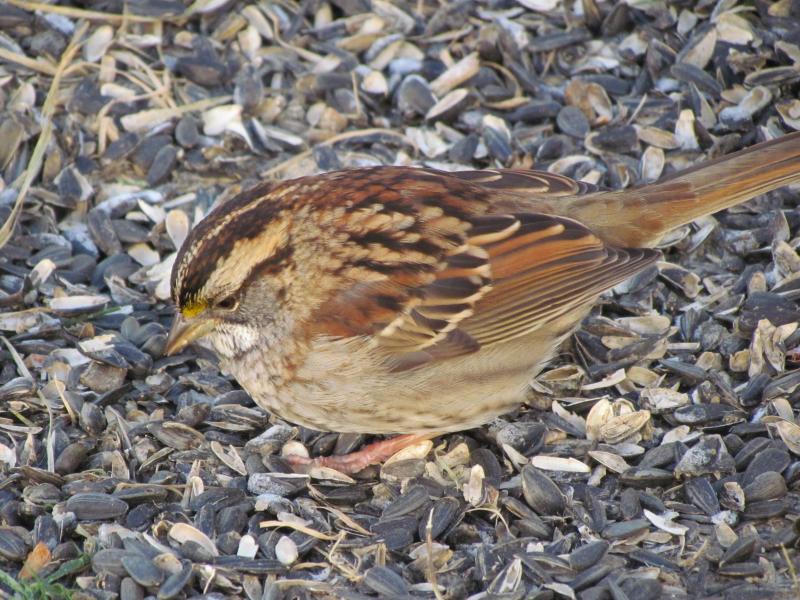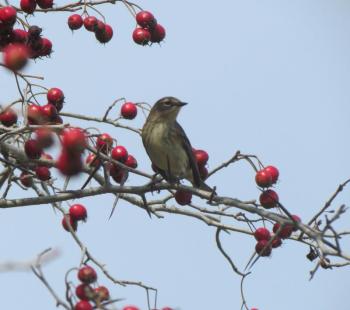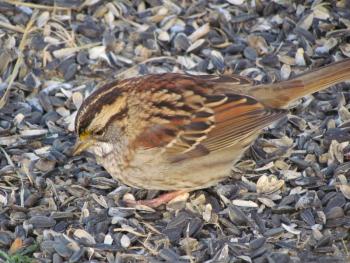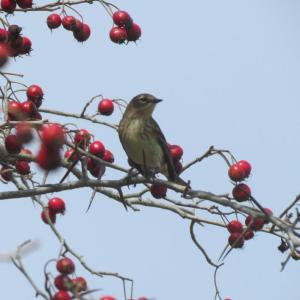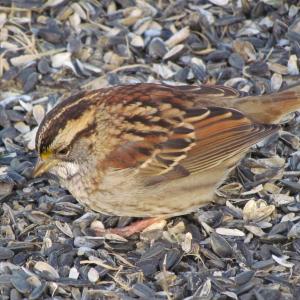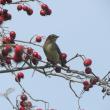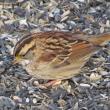An Indigenous-led Vision for Conservation Helps Maine Birds
It’s been just about a month since we saw our last “flying cigars”—the stubby, dark gray chimney swifts that zip around above town, their wings moving so fast they are a blur. Most are now well to our south on their long journey to their South American wintering grounds. We haven’t seen a ruby-throated hummingbird in the garden for about three weeks either, and the chattering of the eastern kingbirds stopped being part of the acoustic landscape in the neighborhood soon after that.
Yes, many of the birds that spend summers raising their young around us here in Maine have departed or will soon depart for points south. We will miss them over the long winter. But their long absence will make their arrival in spring so much the sweeter.
And yet, as some birds are leaving us, others are just arriving from their breeding grounds far to the north. While at the dog park a few days ago we heard the distinctive double noted “pi-pit” calls of an American pipit. Although a handful breed on the tundra-like habitat atop Katahdin, most of the American pipits that are migrating through Maine come from far northern Canada.
One of the smallest of the gulls that we see in Maine is the Bonaparte’s gull. Looking almost like a large tern, with dainty black bills, pink legs, and white patches in the wings, these gulls often hover above the water, dipping down to pick up tiny fish and crustaceans. At other times they wade in the shallows during the receding tide along mudflats and beaches searching for tiny invertebrates to quickly snap up and swallow. Unusual among gulls, the Bonaparte’s nests in trees along the shorelines of the millions of lakes and millions of miles of streams and rivers of the Boreal Forest. Beginning in August, thousands of these dainty gulls inhabit the inshore tidal waters of the Maine coast. Some single locations can have hundreds at one time, and the cold, surging waters off Eastport and Lubec can host many thousands during August and September.
Migrant yellow-rumped warblers are now streaming through Maine in abundance with every passing cold front, and the first waves of white-throated sparrows showed up in our yard just this past week.
The abundance of all these birds that we enjoy in migration here in Maine is tied to the pristine forests and wetlands that support them in summer across the Boreal Forest region of Canada and Alaska.
One of the special places that hosts all these bird species and many more is called the Seal River Watershed, located in northern Manitoba. This vast landscape, almost twice the size of the State of Maine, encompasses the entire 160-mile free-flowing length of the river as it makes its way from the higher rocky Canadian shield to its outflow in an estuary on the shore of Hudson Bay. The river is named for the harbor seals that regularly swim 100 miles or more up the river and its tributaries. Birds and wildlife of the Seal River Watershed are spectacular, with concentrations of thousands of beluga whales at the river’s mouth; in past years, hundreds of thousands of migratory caribou coursed over the interior parts of the watershed.
And of course, there are the birds. Literally millions of birds nest across the twelve million acres of the Seal River Watershed. Among those millions are species like American pipits, Bonaparte’s gulls, yellow-rumped warbler, and white-throated sparrows that are passing through Maine right now.
The world is fortunate that the Indigenous people that have inhabited and used these lands since time immemorial have put forward a world-leading conservation vision for the Seal River Watershed to see it become protected. In a world where it feels like we are sometimes overwhelmed with bad news, the leadership of the four First Nations and one Inuit community that is moving forward this initiative to protect the Seal River Watershed is truly inspiring. Recently, these Indigenous groups, which together have formed the Seal River Watershed Alliance, have begin gathering signatures of supporters of their vision. We invite you all to consider adding your name to show the breadth of support for this amazing work by clicking here..
Jeffrey V. Wells, Ph.D., is a Fellow of the Cornell Lab of Ornithology and Vice President of Boreal Conservation for National Audubon. Dr. Wells is one of the nation's leading bird experts and conservation biologists and author of the “Birder’s Conservation Handbook.” His grandfather, the late John Chase, was a columnist for the Boothbay Register for many years. Allison Childs Wells, formerly of the Cornell Lab of Ornithology, is a senior director at the Natural Resources Council of Maine, a nonprofit membership organization working statewide to protect the nature of Maine. Both are widely published natural history writers and are the authors of the popular books, “Maine’s Favorite Birds” (Tilbury House) and “Birds of Aruba, Bonaire, and Curaçao: A Site and Field Guide,” (Cornell University Press).
Event Date
Address
United States


